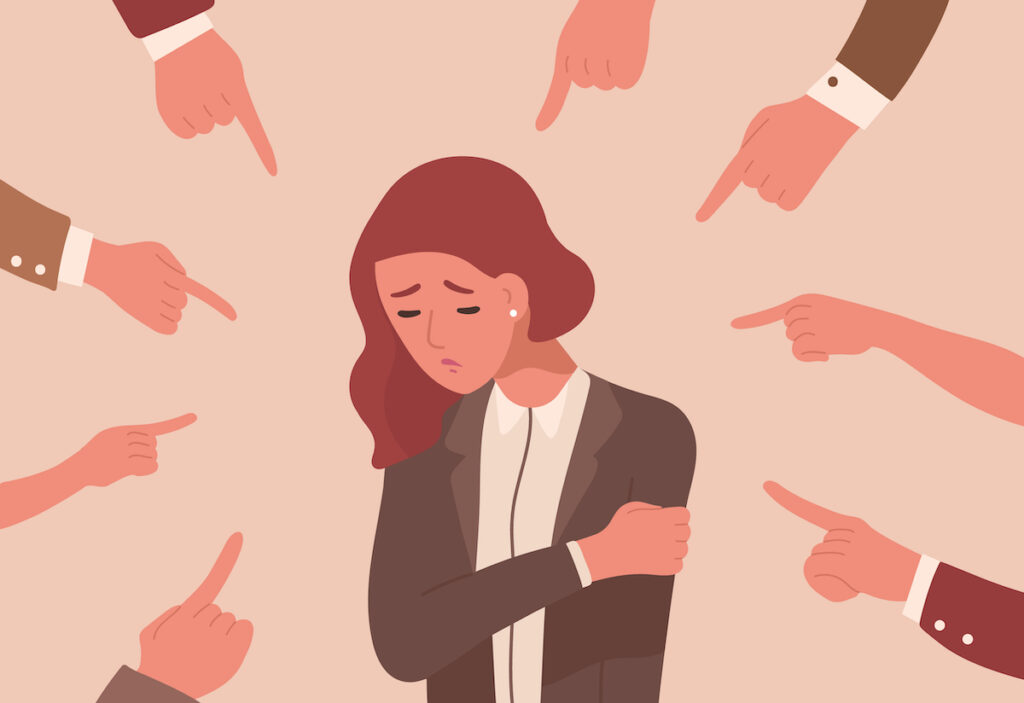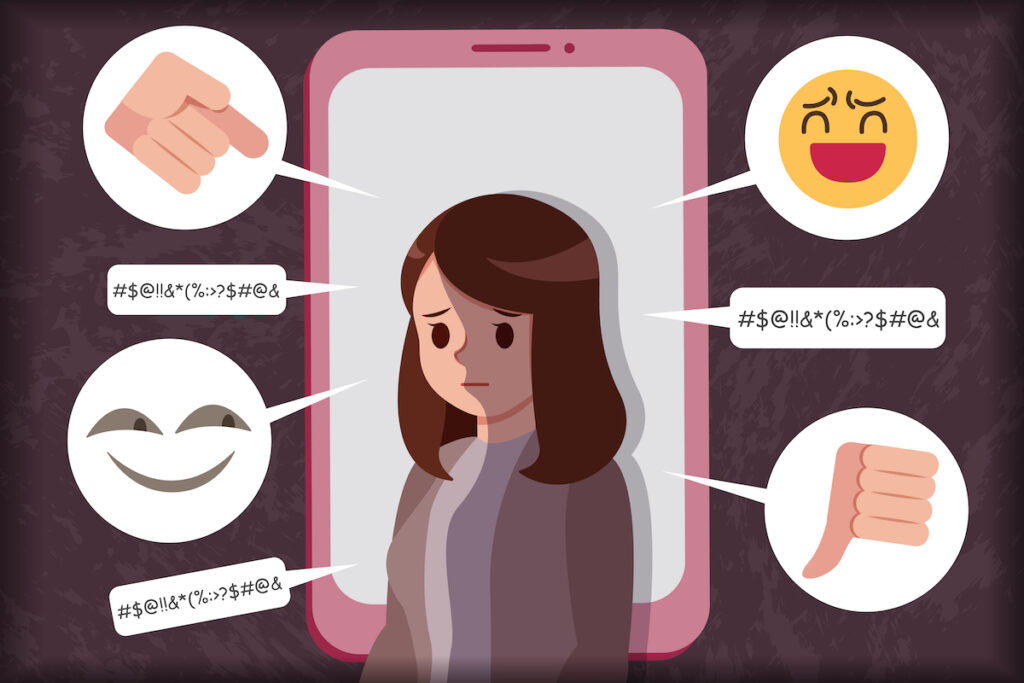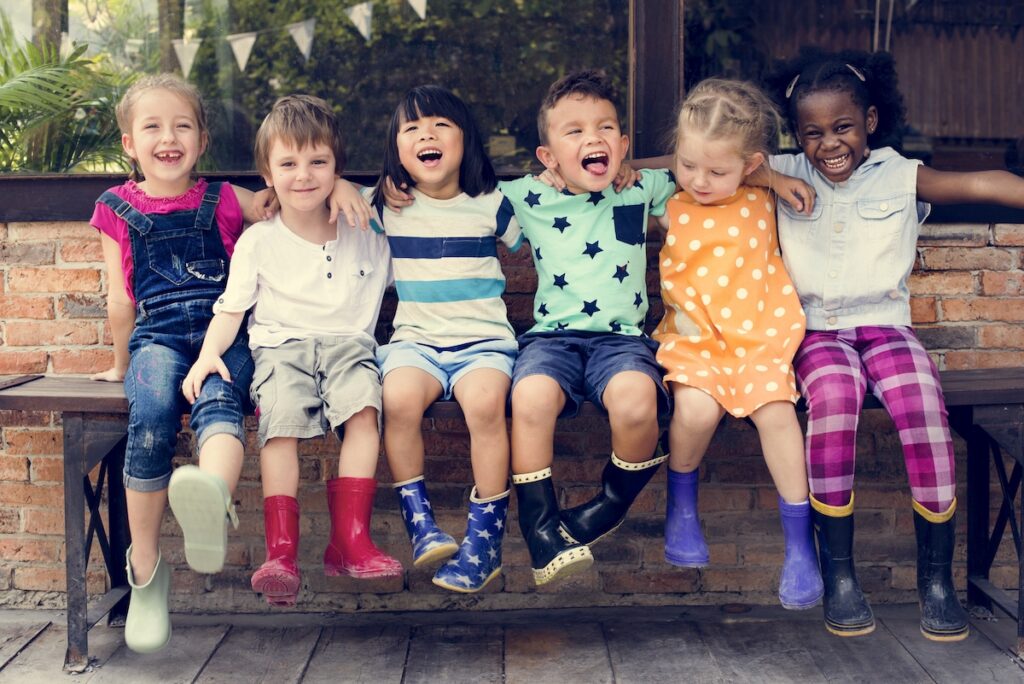
Loneliness has probably come to the forefront of a lot of people’s minds during the coronavirus pandemic. We have not been able to socially connect with others like we used to. However, even before the COVID-19 pandemic, 45% of adults in the UK had experienced loneliness (Office for National Statistics, 2018), which has been defined as the feeling of being alone and lacking in human connection.
Loneliness is particularly common in young people who have survived victimisation, such as bullying, assault, or maltreatment (Matthews et al., 2019; Taillieu et al., 2016; Sable et al., 2006). Victimisation is also linked with other negative outcomes in young people, including mental health difficulties such as depression, lower educational and career development, and a higher risk of certain diseases (Bowes, 2015; Baldwin et al., 2018; Brown & Taylor, 2008). It is therefore important to better understand the relationship between loneliness and victimisation; particularly among children, adolescents, and young adults. The study by Matthews et al. (2020) that we have summarised in this blog aimed to do just that.

Various types of victimisation during childhood are associated with loneliness in later life, while feeling lonely during childhood is associated with future victimisation.
Methods
The researchers investigated the relationship between:
- Victimisation during childhood (age 5-12) and loneliness at the age of 12
- Victimisation during adolescence (age 12-18) and loneliness at the age of 18
- Victimisation during childhood (age 5-12) and loneliness at the age of 18.
They also explored how genes influence this relationship. In order to understand if victimisation causes loneliness irrespective of the genes, researchers decided to involve identical twins, who have the same set of genes. For example, if one twin experienced bullying and was lonelier later on, and the other one was not bullied and experienced no loneliness, we can suggest that loneliness was caused by the victimisation and not by the genes.
A total of 1,116 families with 5-year-old same-sex twins participated in the study. 2,232 children were members of the Environmental Risk Longitudinal Twin Study, which tracks their development. Research staff visited their family home on several occasions to collect the information they needed. The information on victimisation during childhood was collected from twins themselves, their mothers, family doctors and others repeatedly when twins were aged 5, 7, 10, and 12. When the twins were aged 18, they were also asked to report on victimisation that happened to them from the age of 12 via the Juvenile Victimization Questionnaire (Finkelhor et al., 2011). Additionally, when twins were aged 12 and 18, they were asked to fill in a questionnaire, assessing how lonely they felt. At the age of 12, loneliness was measured using three items from the Children’s Depression Inventory (Kovacs, 1992) and at the age of 18 using four items from the UCLA Loneliness Scale, Version 3 (Russell, 1996).
Results
- Being bullied in childhood was associated with feeling lonely at the age of 12
- Being maltreated, neglected, or sexually victimised during adolescence was associated with feelings of loneliness at the age of 18
- Being bullied frequently during childhood was associated with feelings of loneliness at the age of 18
- Loneliness in childhood predicted many forms of victimisation in adolescence
- Genetics had an effect on the link between childhood bullying and loneliness at the age of 18, depending on the type of victimisation and the age it occurred.

This study provides evidence that various forms of victimisation during childhood and adolescence were associated with feelings of loneliness later in life.
Conclusions
This study indicated that bullying during childhood was the form of victimisation that predicted feelings of loneliness at different ages. The researchers explained their findings with the need for social inclusion and acceptance by peers during childhood and adolescence. When children and adolescents are bullied during that vulnerable age, which often means being socially excluded from their group of peers, their social needs are not met. Moreover, the knowledge of existing positive relationships among their peers compared to their feelings of struggle or social exclusion might also bring feelings of injustice, as well as the perception of oneself as an outsider, which could lead to feeling isolated and lonely.
However, the researchers suggested that genetic mechanisms could also influence the development of loneliness when bullying was experienced during childhood. As a matter of fact, they found that children with a genetic vulnerability were more likely to experience loneliness, as genetics influence the way they recover from being victimised. Furthermore, the extent to which young adults feel lonely may depend on the stage of life when victimisation was experienced (e.g., childhood, adolescence).

The findings of this study suggested that bullying during childhood was the form of victimisation that predicted feelings of loneliness at different ages, and this may be explained by the unmet need for social inclusion during childhood and adolescence.
Strengths and limitations
The study has numerous strengths including:
- Robust methodology
- Large sample of 2,232 participants
- Longitudinal design, yet large participant retention rate
- Representative of the full socioeconomic range (GB)
- The first study of its kind to authors’ knowledge
- Highlights the importance of decreasing feelings of loneliness early in life.
However, a few limitations should be acknowledged:
- 90% of the sample is from a white background, thus the findings may not be generalisable
- Relies on the assumption that monozygotic twins are fully identical, which is a myth. Bruder et al. (2008) have indicated that even MZ twins can have different genotypes; then, epigenetics has taught us that twins’ phenotypes diverge increasingly over a lifetime
- Twins are likely to experience loneliness differently from non-twins, as well as monozygotic twins from dizygotic twins
- At-home assessment could have jeopardised the validity of the results, especially if a child is victimised at home and is not able to speak about it when interviewed
- Arbitrary modification of loneliness measures, e.g. loneliness in childhood measured using 3 questions from Children’s Depression Inventory instead of the gold-standard Children’s Loneliness Scale

This is the first study to explore the association between victimisation and loneliness, and it highlights the importance of social connections early in life.
Implications for practice
Different types of victimisation have different effects on individuals in childhood and in adolescence, which could be very useful in informing support strategies for lonely or victimised children and young people. Specifically, the vicious cycle of victimisation and loneliness (childhood victimisation to adolescence; loneliness to adolescence victimisation) highlights the importance of decreasing feelings of loneliness early in life, to protect children and adolescents from further harm.
Implications for clinical and social services, policy-makers and councils could include encouraging practitioners to equip people who are lonely with coping skills and strategies to manage their feelings of loneliness and ask them exploratory questions around past experiences of victimisation. It’s very important to implement the evidence into practice and understand the deeper connection between trauma in early life and loneliness.
The results of the study also suggest that cyberbullying is more directly linked to the outcome of loneliness than other forms of victimisation. As social media use is growing in everyday social life, future research is likely to focus on the effects of this form of victimisation on loneliness. But remember, being victimised and feeling lonely do not always go hand in hand, and many people who experience one thing do not go on to experience the other!
For further information or support, please see our list of services below:
Loneliness support organisations
Mind Charity, Mental Health Foundation, and Loneliness NHS Guidance.
Victimisation support organisations
Victim Support, Support Line, and Anti-Bullying Alliance.

Implications for clinical and social services, policymakers, and councils could include encouraging practitioners to equip people who are lonely with coping skills and strategies to manage their feelings of loneliness.
Statement of interests
None.
Contributors
Thanks to the UCL Mental Health MSc students who wrote this blog from Morant Group: Lydia Munns (@lydia_paints), Ada Kaluzna, Margaux Liebmann, Tala Koren and Chengcheng Ke.
UCL MSc in Mental Health Studies
This blog has been written by a group of students on the Clinical Mental Health Sciences MSc at University College London. A full list of blogs by UCL MSc students from can be found here, and you can follow the Mental Health Studies MSc team on Twitter.
We regularly publish blogs written by individual students or groups of students studying at universities that subscribe to the National Elf Service. Contact us if you’d like to find out more about how this could work for your university.
Links
Primary paper
Matthews, T., Caspi, A., Danese, A., Fisher, H., Moffitt, T., & Arseneault, L. (2020). A longitudinal twin study of victimization and loneliness from childhood to young adulthood. Development and Psychopathology, 1-11. doi:10.1017/S0954579420001005
Other references
Baldwin, J. R., Arseneault, L., Caspi, A., Fisher, H. L., Moffitt, T. E., Odgers, C. L., … Danese, A. (2018). Childhood victimization and inflammation in young adulthood: A genetically sensitive cohort study. Brain, Behavior, & Immunity, 67, 211–217.
Bowes, L. (2015). Peer victimisation during adolescence and its impact on depression in early adulthood: Prospective cohort study in the United Kingdom. BMJ, 350, h2469
Brown, S., & Taylor, K. (2008). Bullying, education and earnings: Evidence from the National Child Development Study. Economics of Education Review, 27, 387–401.
Bruder, C. E., Piotrowski, A., Gijsbers, A. A., Andersson, R., Erickson, S., … (2008). Phenotypically concordant and discordant monozygotic twins display different DNA copy-number-variation profiles. American journal of human genetics, 82(3), 763–771.
Finkelhorn, D., Ormrod, R. K., & Turner, H. A. (2011). Poly-victimization: A neglected component in child victimization. Child Abuse & Neglect, 31(1), 7–26.
Kovacs, M. (1992). Children’s Depression Inventory (CDI) manual. Toronto, ON: Multi-Health Systems.
Matthews, T., Danese, A., Caspi, A., Fisher, H. L., Goldman-Mellor, S., Kepa, A., … Arseneault, L. (2019). Lonely young adults in modern Britain: Findings from an epidemiological cohort study. Psychological Medicine, 49, 268–277.Pavri, S. (2015). Loneliness: The cause or consequence of peer victimization in children and youth. The Open Psychology Journal, 8, 78–84.
Office for National Statistics (2018). What characteristics and circumstances are associated with feeling lonely? Accessed 20 December 2020.
Russell, D. W. (1996). UCLA Loneliness Scale (version 3): Reliability, validity, and factor structure. Journal of Personality Assessment, 66, 20–40.
Sable, M. R., Danis, F., Mauzy, D. L., & Gallagher, S. K. (2006). Barriers to reporting sexual assault for women and men: Perspectives of college students. Journal of American College Health, 55, 157–162.
Taillieu, T. L., Brownridge, D. A., Sareen, J., & Afifi, T. O. (2016). Childhood emotional maltreatment and mental disorders: Results from a nationally representative adult sample from the United States. Child Abuse and Neglect, 59, 1–12.
Photo credits
- Photo by Ahmed Nishaath on Unsplash
- Photo by Zoltan Tasi on Unsplash
- Photo by Timothy Eberly on Unsplash

We work in schools providing support for psychological and emotional wellbeing. This form of research is valuable and prompts us to think of additional strategies and interventions to help children and young people. Thank you